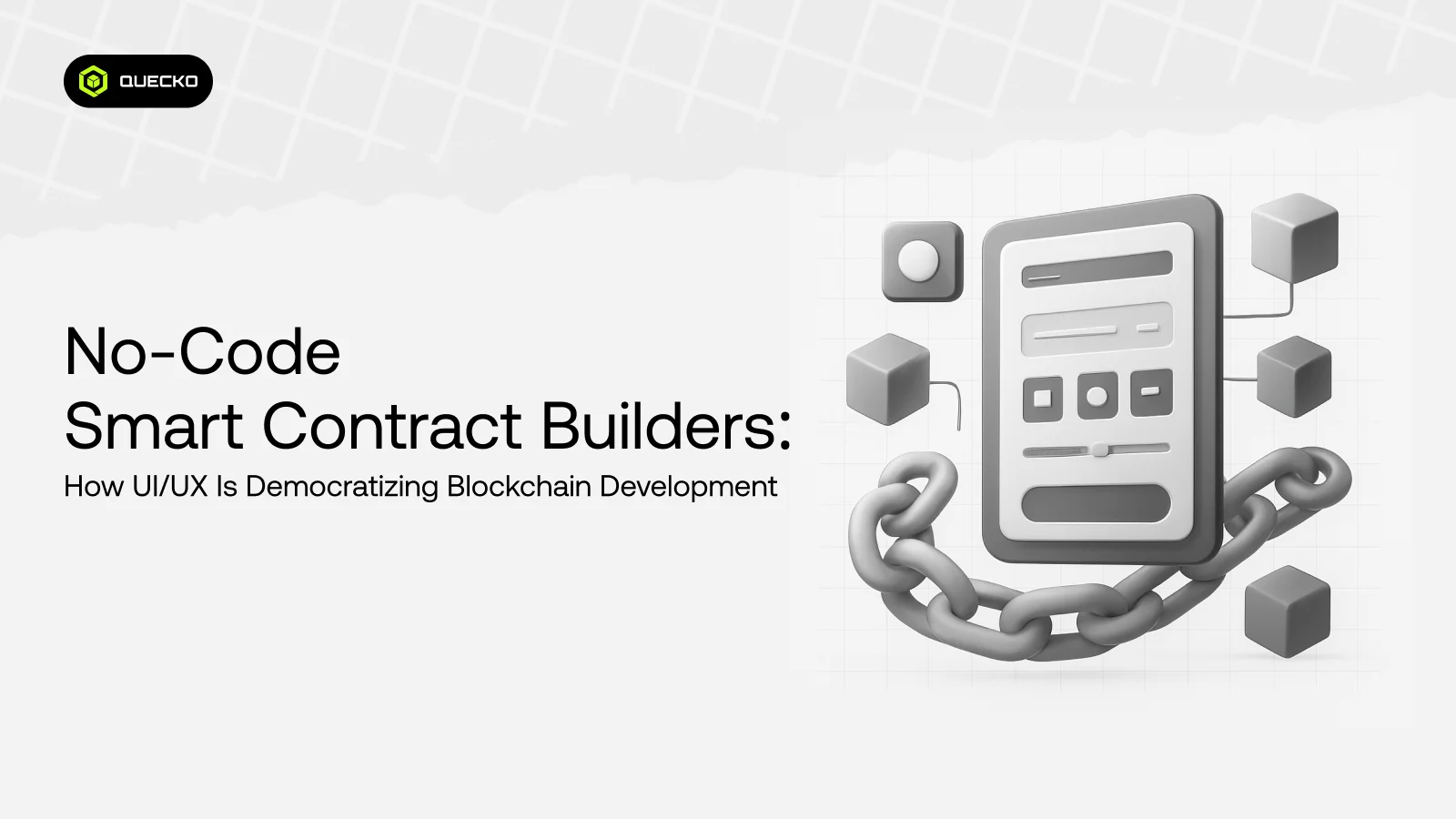Tokenomics Design in 2025: Building Sustainable Crypto Economies
At the core of next-gen blockchain projects are sustainable tokenomics models that align incentives, foster community trust, and drive long-term network growth. The world of cryptocurrencies has moved far beyond simple peer-to-peer payments. Today, tokens are the lifeblood of decentralized ecosystems, shaping behavior, securing networks, and driving adoption. In 2025, designing a sustainable tokenomics model […]

At the core of next-gen blockchain projects are sustainable tokenomics models that align incentives, foster community trust, and drive long-term network growth.
The world of cryptocurrencies has moved far beyond simple peer-to-peer payments. Today, tokens are the lifeblood of decentralized ecosystems, shaping behavior, securing networks, and driving adoption. In 2025, designing a sustainable tokenomics model is no longer optional; it’s essential for the long-term success of any blockchain project.
Modern tokenomics isn’t just about hype or short-term speculation. It’s about creating resilient, adaptable, and user-centric ecosystems where all stakeholders from developers and validators to everyday users have aligned incentives and clear benefits. By combining thoughtful economic models with technological innovation, projects can ensure growth, security, and longevity in an increasingly competitive crypto landscape.
In 2025, tokenomics is no longer about creating hype or short-term gains. The emphasis has shifted toward sustainable growth, balanced incentives, and resilient governance. Projects are exploring new ways to align stakeholder interests, manage supply and demand, and foster vibrant ecosystems where participants from validators and developers to end users derive tangible value.
Core Principles of Tokenomics in 2025: Incentives, Governance, and Utility
A strong token economy starts with foundational principles that guide design and decision-making:
1. Incentive Alignment Across Networks
Tokens are powerful tools to motivate desired behavior. Whether it’s staking, providing liquidity in liquidity pools, or participating in governance, rewards and other incentives must align with network health. Dynamic incentive models, such as those used by Optimism and NEAR Protocol, adjust rewards based on performance and contribution, ensuring participants are fairly compensated while promoting long-term growth.
2. Multi-Layered Token Utility
A token’s value is directly tied to its utility. Beyond trading, tokens can grant access to DeFi platforms, enable voting in governance systems, or act as collateral in lending protocols. Projects are increasingly combining utility tokens with governance functions to create multi-purpose value propositions. Ethereum’s ETH demonstrates this principle by supporting financial operations, staking, and governance, creating a versatile and robust value proposition for holders.
3. Scarcity and Inflation Control
Balancing supply and demand is essential to maintain token value. Mechanisms like deflationary burns, adjustable minting schedules, or capped supply models prevent oversaturation while encouraging responsible network participation. Proper allocation ensures validators, developers, and community members are fairly rewarded. Tokens such as Arbitrum (ARB) implement dynamic supply strategies and transparent vesting schedules to maintain sustainable token economies.
4. Decentralized Governance Models
Governance tokens empower users to influence network decisions, from protocol upgrades to fee structures. Layered governance models, combining long-term holders with active participants, balance efficiency and decentralization, ensuring fair representation. Clear frameworks also enhance investor confidence and promote active community participation across the blockchain ecosystem.
5. Security Through Token Design
Tokens contribute to network security, particularly in PoS and hybrid consensus systems. Well-structured staking incentives encourage validators to secure the network while penalizing malicious behavior, maintaining resilience and trust. Strong network security ensures all participants from validators to users can interact confidently and safely.
Innovative Tokenomics Mechanisms Shaping Crypto in 2025
1. Dynamic Incentive Models
Networks increasingly use AI-driven analytics to optimize token supply distribution and rewards. Whether for staking, liquidity provision, or governance participation, incentives adjust in real time to match network needs, ensuring efficiency and reducing manual oversight.
2. Cross-Chain Token Utility
Tokens are no longer confined to a single blockchain. Cross-chain bridges, wrapped tokens, and multi-protocol staking allow assets to function seamlessly across networks, boosting liquidity and adoption. NEAR Protocol and Chainlink are leaders in enabling multi-network utilities.
3. Programmable Token Flows
Smart contracts enable tokens to automatically redistribute, burn, or allocate rewards based on pre-defined rules. This automation increases transparency, reduces errors, and ensures predictable economic behavior, making ecosystems more trustworthy and sustainable.
4. Gamified Participation and Community Engagement
Token economies increasingly use gamification to boost user involvement. Participants earn rewards through staking, contributing to liquidity pools, or participating in community engagement initiatives. Active engagement ensures networks remain vibrant, responsive, and aligned with user needs.
5. ESG and Sustainability Considerations
Modern crypto projects prioritize sustainable tokenomics by integrating ESG principles. Energy-efficient consensus, responsible token supply management, and transparent rewards reduce environmental impact while promoting adoption. Combining AI-driven analytics with sustainable tokenomics ensures efficient reward distribution and strengthens network longevity.
Token Distribution and Investor Confidence
Fair token distribution is essential for long-term network stability. Transparent allocation and vesting prevent early dumping and ensure all participants from developers to the community receive their fair share, strengthening investor confidence.
Understanding various token types, including utility, governance, and security tokens, helps stakeholders assess value and risk. Thoughtful distribution and clear categorization enhance incentives, liquidity, and adoption, building a stronger, more resilient blockchain ecosystem.
Building Investor Trust in Tokenized Economies
Strong governance frameworks help maintain investor trust. Transparent audits and open-source code reinforce accountability. Reliable reporting boosts market confidence, signaling that the project is stable, transparent, and well-managed.
Consistent engagement with the community and timely updates on network activity further enhance trust, attracting long-term support from both retail and institutional stakeholders.
Understanding Investor Sentiments and Market Behavior
Monitoring investor sentiments helps founders anticipate buying or selling pressure during volatile markets. Positive sentiments drive momentum and long-term success, while ignoring community mood may expose a project to shocks.
Actively tracking feedback and market signals allows real-time tokenomics adjustments, and engaging the community through transparent governance strengthens trust and supports sustainable growth across the blockchain ecosystem.
Burn Mechanisms and Supply Models
Deflationary burn mechanisms manage circulating token supply, maintain value, and incentivize holding. Flexible supply models, including capped and adjustable minting strategies, help balance scarcity with utility. Proper design reinforces trust among users and supports long-term network growth.
Integrating burn mechanisms with staking rewards and liquidity management stabilizes token value and encourages long-term participation. Clear communication about supply strategies ensures transparency, boosting investor confidence and creating a resilient blockchain ecosystem.
Designing Effective Tokenomics for Long-Term Stability
Projects with effective tokenomics handle market volatility and maintain healthy liquidity. Balancing incentives, scarcity, and governance sustains value over time.
Adaptive supply models and transparent vesting schedules strengthen investor confidence and mitigate risks from market shocks. Consistent monitoring and periodic adjustments help projects remain resilient, fostering sustainable growth and ecosystem stability.
Market Trends and Their Impact on Token Value
Analyzing market trends ensures token models adapt to shifting dynamics and mitigate shocks. Tracking emerging patterns, investor behavior, and network activity allows proactive tokenomics adjustments, optimizing liquidity, enhancing token utility, and strengthening investor confidence.
Continuous monitoring enables anticipation of investor needs, refined token distribution, and long-term engagement. Strategic alignment with market signals maintains sustainable growth and trust across the blockchain ecosystem.
Real-World Examples of Next-Gen Tokenomics
- Ethereum (ETH): PoS and EIP-1559 introduce fee burns and deflationary mechanisms, rewarding holders and aligning network growth.
- Optimism (OP): Uses dynamic staking rewards and controlled inflation to maintain liquidity, incentivize validators, and ensure network stability.
- NEAR Protocol (NEAR): Combines staking, cross-chain bridging, and automated token flows to create a multi-network token economy.
- ChainGPT (GPT): Integrates AI analytics to dynamically adjust rewards, optimizing efficiency.
- Omnichain Web: Uses AI agents to manage liquidity across chains, automate cross-chain swaps, and reduce gas costs.
Case Studies: Leading Tokenomics in Action
- Ethereum: Illustrates layered incentives, cross-chain compatibility, and network security. EIP-1559 fee burn and PoS staking maintain token value and stability.
- NEAR Protocol: Leverages AI for staking rewards and liquidity optimization, keeping participants incentivized.
- Optimism & ChainGPT: Dynamic inflationary models and AI-driven token management demonstrate sustainable growth through technology.
The Role of Decentralized Exchanges and DAOs in Token Governance
DEXs enable transparent trading without intermediaries. DAOs allow collective decision-making, giving every token holder a voice. Together, they foster self-sustaining governance, enhancing transparency, community ownership, and network evolution.
Detecting Wash Trading and Maintaining Fair Markets
Wash trading inflates trading volume artificially. Effective monitoring tools preserve investor confidence. Transparent exchanges discourage manipulative practices, promoting genuine liquidity and organic growth.
Security Tokens and Their Emerging Role
Security tokens offer regulated investment opportunities and bridge traditional finance with decentralized networks. They attract institutional investors while ensuring compliance, strengthening blockchain ecosystems and investor confidence.
Key Challenges in Tokenomics Design
- Security and Complexity Risks: Advanced models increase attack surfaces. Regular audits are critical.
- Regulatory Compliance: Navigate evolving global regulations to attract investors while preserving innovation.
- Market Volatility: Time-locked rewards and fair vesting schedules maintain investor confidence.
- Community Coordination: Engaged communities are essential for adoption and credibility.
Risk Management in Tokenomics Design
Flexible tokenomics adapt to market trends and shocks. Burn mechanisms, strong liquidity provisions, and transparent governance reduce risks like wash trading or supply manipulation. Monitoring token supply, investor sentiment, and ecosystem shifts reinforces trust.
The Future of Tokenomics: 2025 and Beyond
- AI-Driven Tokenomics: Smart contracts optimize token flows and rewards in real time.
- Cross-Chain Economies: Enhance utility, interoperability, and adoption.
- Advanced Governance Models: Empower stakeholders for fair decision-making.
- Sustainable Economic Models: Deflationary mechanisms, programmable flows, and ESG-aligned practices ensure resilience.
Collaboration Among Crypto Projects for a Unified Future
Interoperability defines decentralized economies. Cross-chain partnerships and shared liquidity pools enhance network efficiency and adoption. Collaborative initiatives accelerate innovation and foster investor confidence.
Investor Sentiments
Positive investor sentiment drives liquidity, participation, and long-term growth. Advanced tokenomics blend data analytics with community engagement to maintain trust and sustainable design.
Evolving Market Dynamics and Investor Confidence
Monitoring trends, adoption, and liquidity sustains growth and confidence. Transparent communication and fair tokenomics keep stakeholders engaged. Adaptable ecosystems turn challenges into opportunities.
Market Shocks and Project Success Factors
Price crashes or liquidity crises test tokenomics resilience. Adaptive supply models, clear communication, and risk management help projects withstand volatility. Sustainable tokenomics absorbs uncertainty, turning challenges into growth opportunities.
Final Thoughts
Tokenomics design in 2025 is reshaping crypto economies. Modern models emphasize alignment, sustainability, and utility, ensuring secure, engaging, and resilient networks.
AI, cross-chain integration, and programmable smart contracts transform tokenomics into dynamic, adaptive ecosystems. Future token economies will incentivize participation, drive innovation, secure networks, and foster vibrant communities.
The future of crypto is not just decentralized; it’s intelligent, incentive-aligned, and economically robust, paving the way for truly sustainable blockchain ecosystems.
Date
1 month agoShare on
Related Blogs

Tokenomics Design in 2025: Building Sustainable Crypto Economies
1 month ago

AI-Powered Smart Contract Wallets The Future of User-Friendly Blockchain UX
3 months ago

Investing in Cryptocurrency: Tips for Beginners
3 months ago

No-Code Smart Contract Builders: How UI/UX is Democratizing Blockchain Development
3 months ago







